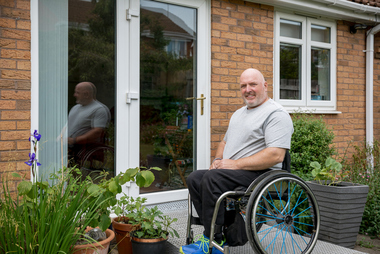If you want to age in place or have a disability that requires modifying your home to make your life easier and more comfortable, you must learn about accessible living. When renovating, you'll want to consult professionals specializing in universal design or accessibility modifications. They can provide expert advice tailored to your needs and ensure the renovations meet safety standards and regulations. Here are the basics you'll want to consider for your accessible renovation:

Widen doorways and remove barriers
Widening doorways is crucial for accommodating mobility aids such as wheelchairs and walkers. Aim for a minimum width of 32 inches for doorways throughout the home. Additionally, consider removing barriers like steps or raised thresholds by installing ramps or lifts to ensure easy and safe movement between rooms and various levels of the house.
Install grab bars and handrails
Adding grab bars and handrails in slip-prone areas such as bathrooms, staircases and hallways can significantly enhance safety and stability. Install grab bars near toilets, showers and bathtubs to assist with sitting, standing and balance. Sturdy handrails along staircases can provide support and prevent falls.
Use accessible bathroom features
Bathrooms are essential spaces to focus on for accessibility. Consider installing a walk-in shower with a bench or built-in seating, handheld showerheads and slip-resistant flooring. Install lever handles instead of knobs on faucets and door handles for more effortless operation. Ensure there is enough space to maneuver a wheelchair or mobility aid comfortably around the room.
Adapt the kitchen
Make the kitchen more accessible by considering features such as lowered or adjustable-height countertops to accommodate individuals who use wheelchairs. Install pull-out shelves and drawers for easier access to storage. Ensure that kitchen appliances like stoves and sinks have controls and handles that are easy to reach and operate.
Improve lighting and eliminate tripping hazards
Adequate lighting is important for individuals who are visually impaired or have mobility challenges. Install bright, even lighting throughout the home, including in hallways, staircases and entryways. Eliminate tripping hazards by making sure floor surfaces are even, removing loose rugs and securing electrical cords.
Stay informed with MS information, news and resources. Sign-up Here: https://bit.ly/3NkMIeR
Visit the MS Views and News articles and videos archives: https://wwwmsviewsandrelatednews.blog

No comments:
Post a Comment
Thank You for leaving a comment.
Attempts to redirect viewers of this blog to another website and / or any marketing, will be removed.
Note: Only a member of this blog may post a comment.